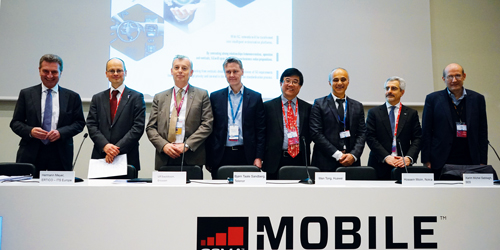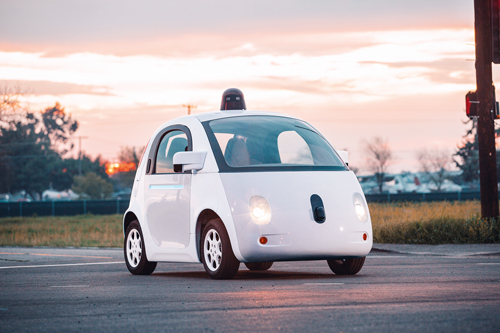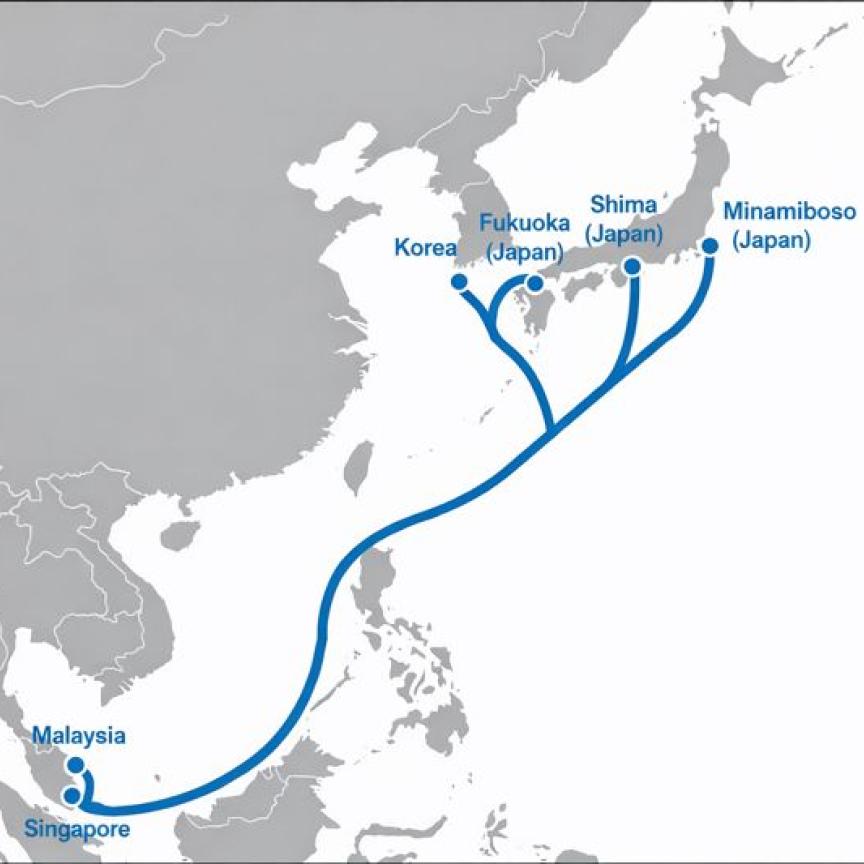On 22 February, at the Mobile World Congress in Barcelona, 5G PPP, the public-private partnership between the European Commission and the European industry and research community, released a vision paper describing how 5G network infrastructures will lead to ‘a new industrial revolution’.
The paper, titled 5G Empowering Vertical Industries, considers the application of digital technologies to the most important vertical sectors in Europe – including manufacturing, transportation, healthcare, energy, and entertainment – and how their requirements will shape 5G system design.
An analysis of the design requirements for this diverse group of industry verticals identified several performance targets that they have in common: latency of below 5ms, high reliability (the network must be operational for at least 99.999 per cent of the time) and extreme density (able to connect up to 100 devices per square metre), along with tight constraints on territory or population coverage.
These are the most important performance targets that 5G needs to achieve if it is to support all possible services in the five sectors that have been investigated (see box, below). Meanwhile, mobile broadband at peak data rates of up to 1Gb/s must be supported concurrently on the mobile network alongside the specific applications of the industry verticals.
The Commission says it will refer to this white paper when it takes part in international negotiations on spectrum and standards for 5G. The aim is to involve all sectors in these discussions ‘so that Europe is among the first continents to deploy “true” 5G connectivity’.
Günther Oettinger, European Commissioner for the Digital Economy and Society, commented: ‘We are trying to develop not only a communication network to connect people, but rather one that will deliver the Internet of Things, connecting anything that can be connected and delivering innovation on top of connectivity.

Representatives of the European Commission and the 5G Infrastructure Association at the launch of the 5G PPP White Paper 5G Empowering Vertical Industries at Mobile World Congress 2016
Many hands make light work
As 2020 draws closer, delivering on the 5G vision will require a concerted and coordinated effort between end users, telecom operators, equipment and components manufacturers, research institutions and academia. Recognising early on that the vision would require unprecedented levels of cooperation, the European Commission became involved.
Originally announced at Mobile World Congress in 2013, the 5G PPP was created by the European ,Commission in partnership with industry, to make 5G mobile technology a reality in Europe by 2020. The ambitious programme aims to deliver architectures, technologies and standards for the communications infrastructures of the coming decade.
The European Commission has earmarked public funding of €700 million through its Horizon 2020 Programme to support the activity. They expect this will be matched by investments worth five times this amount – €3 billion – from the private side. This money will fund between 60 and 100 research and development projects, depending on their size, across three different phases.
Although wireless technologies are the starting point for the programme, it will necessarily exploit the strengths of both optical and wireless technologies. ‘The message is that 5G is more than just a radio access technology,’ commented Thibaut Kleiner, head of unit, Network Technologies at the European Commission DG CONNECT.
The 5G architecture encompasses the entire network infrastructure, from optical core to radio access network. To achieve the capacity and coverage requirements in the access portion of the network will require a converged wireless-optical-satellite infrastructure, integrating mobile fronthaul and backhaul into a common transport network. Transporting vast amounts of data across the network will require new advances in ultra-high capacity core networks. 5G will also incorporate concepts from software-defined networking (SDN) and network functions virtualisation (NFV) to improve operators’ control of multi-tenant networks and enable rapid service provisioning. Energy consumption is also a critical aspect as the digital networks will soon represent something like four per cent of the total energy consumption in developed economies.
In September 2014 the 5G PPP held a stakeholders’ consultation workshop on optical technologies, where participants ‘strongly agreed that research on optical networks would be essential to realise the objectives associated with the 5G PPP, especially those related to low latency’. At the same time the participants concurred that ‘these research challenges were relevant for optical networks anyway, more or less regardless of the 5G PPP’. As a result of these meetings, optical was put back at the heart of the 5G PPP programme.
On behalf of the Commission, Thibaut Kleiner carried that message to the European Conference on Optical Communications (ECOC), which took place in Valencia last September. In his plenary presentation, Kleiner explained to the audience that the Commission recognised the importance of optical networks to the success of the 5G PPP, and encouraged the optical community to become further involved. ‘In phase two, optics is expected to play a starring role,’ he declared.
Phase one of the 5G PPP is already under way. The optical aspect of this work is taking place under the Horizon 2020 work programme ICT6–2014 Smart Optical and Wireless Network Technologies, with €29 million of available funding. Some 18 projects were selected; they started in July 2015, and will run for up to three years.
Optical-themed research in this work programme addresses challenges in four main areas:
- the lack of dynamic control and management of optical network resources within and across operator’s domains for lower cost and more flexible use of resources;
- the ubiquitous delivery of very high speed access at 10 Gb/s per user within 10 years and later 100 Gb/s (including visible light communication);
- the architectural limitations of inter and intra data centre connectivity;
- the limitations of current optical transmission technologies.
The Commission is now preparing for the second phase of the PPP, which will build on the projects in phase one, and place a greater emphasis on trials and demonstrations. On the optical theme, work will take place through two upcoming 5G-related Horizon 2020 calls, ICT-07-2017: 5G PPP Research and Validation of Critical Technologies and Systems, and ICT-08-2017: 5G PPP Convergent Technologies. The call for proposals will open on 10 May 2016 and close on 8 November 2016.
Thibaut Kleiner explained: ‘There will be a specific optical core strand as part of phase two of this 5G PPP, not only for research but also –and most important – for the innovation strand. Essentially what we hope is that in this objective you can have optical networks delivering high traffic and capacity increase for 5G networks, and at the same time we will work on the core and metro environments so we can have more flexible and adaptive form of these networks. As far as innovation is concerned, here we want to have new solutions showcasing how we can use the new access functionalities for 5G technologies.’
Project seeking funding from ICT-07-2017 should ‘aim to eliminate the current and anticipated limitations of network infrastructures, by making them capable of supporting a much wider array of requirements than is the case today, and with capability of flexibly adapting to different “vertical” application requirements.’
The call covers three strands that complement each other:
- Strand 1: wireless access and radio network architecture/technologies
- Strand 2: High-capacity elastic optical networks
- Strand 3: the ‘software network’
Projects seeking funding from ICT-08-2017 need to tackle the challenge of managing converged networks and technologies. The call explains it thus: ‘On the one hand, technological versatility increases service provision capabilities, with ever raising possibilities to dimension service offer to context and user specific service-level agreements. On the other hand, convergence technologies are getting increasingly complex, with ever larger integration of multiple technological heterogeneous hardware and software components, and more difficult properties to characterise at scale. The challenge thus tackles scalability and usability of mixed network technological approaches that can benefit from previous research, towards validation of deployment at scale.’
Proposals must relate to:
- ubiquitous 5G access leveraging optical technologies
- flexible network applications
- cooperation in access convergence
A shared vision for 5G
The European Commission believes that by focusing on a shared vision, projects will make more rapid progress. ‘We have embraced an approach where individual projects are not only working on their own, they are collaborating to a common vision for 5G,’ said Thibaut Kleiner. Expanding the collaboration beyond the borders of Europe, the Commission has also signed joint declarations of working on 5G with governments in Brazil, China, Japan and Korea.
Furthermore, the Commission is currently considering how to expand this visionary model to encompass all networking technologies. ‘These research clusters will also be reassessed to see to what extent the 5G PPP can become the centre of gravity for all our research activities in network technologies,’ said Kleiner.
Further information: https://5g-ppp.eu/
5G use cases that are just around the corner
The 5G PPP white paper presents a series of use cases that are considered the most realistic for deployment in 2020. These applications should form the basis for a consolidated set of 5G requirements that will feed into the 5G standardisation process.
The automotive sector considers that 5G will be used for cooperative automated driving so that thousands of vehicles can exchange information between each other in real-time (low latency). Future connected cars will have a ‘see through’ security application that enables the user to see the road far ahead of the vehicle in front of them, overtake safely and avoid accidents.

Google’s prototype self-driving car has no steering wheel or pedals, and instead lets the software and sensors handle the driving
The health sector would find 5G useful for smart pharmaceuticals containing embedded connected devices for the management of chronic diseases and pains in general; remote monitoring of symptoms and vital signs such as blood pressure and heart rate; and healthcare robotics. For example, 5G could improve the quality of experience of surgeons using operating robots.
In smart factories, 5G could be useful for time-critical process control, factory automation, remote control, enterprise communication and connected goods. It would be vital for robot-based manufacturing processes where the detection of an incident may require ultra-fast response from the network.
5G could help energy companies balance supply and demand in a future when a growing proportion of energy is generated by solar and wind (sometimes unpredictable) and the growing number of electric vehicles place varying and unpredictable demand on the network. Smart grids use wireless networks and protocols to enable electricity consuming and producing devices to be monitored.
The media and entertainment sector will use 5G for ultra-high fidelity media, live event experiences, immersive and integrated media, cooperative media production and collaborative gaming. For instance, games based on virtual reality could be played across continents, or football games watched in 3D and with immersive lenses from a living room as from within the stadium.

